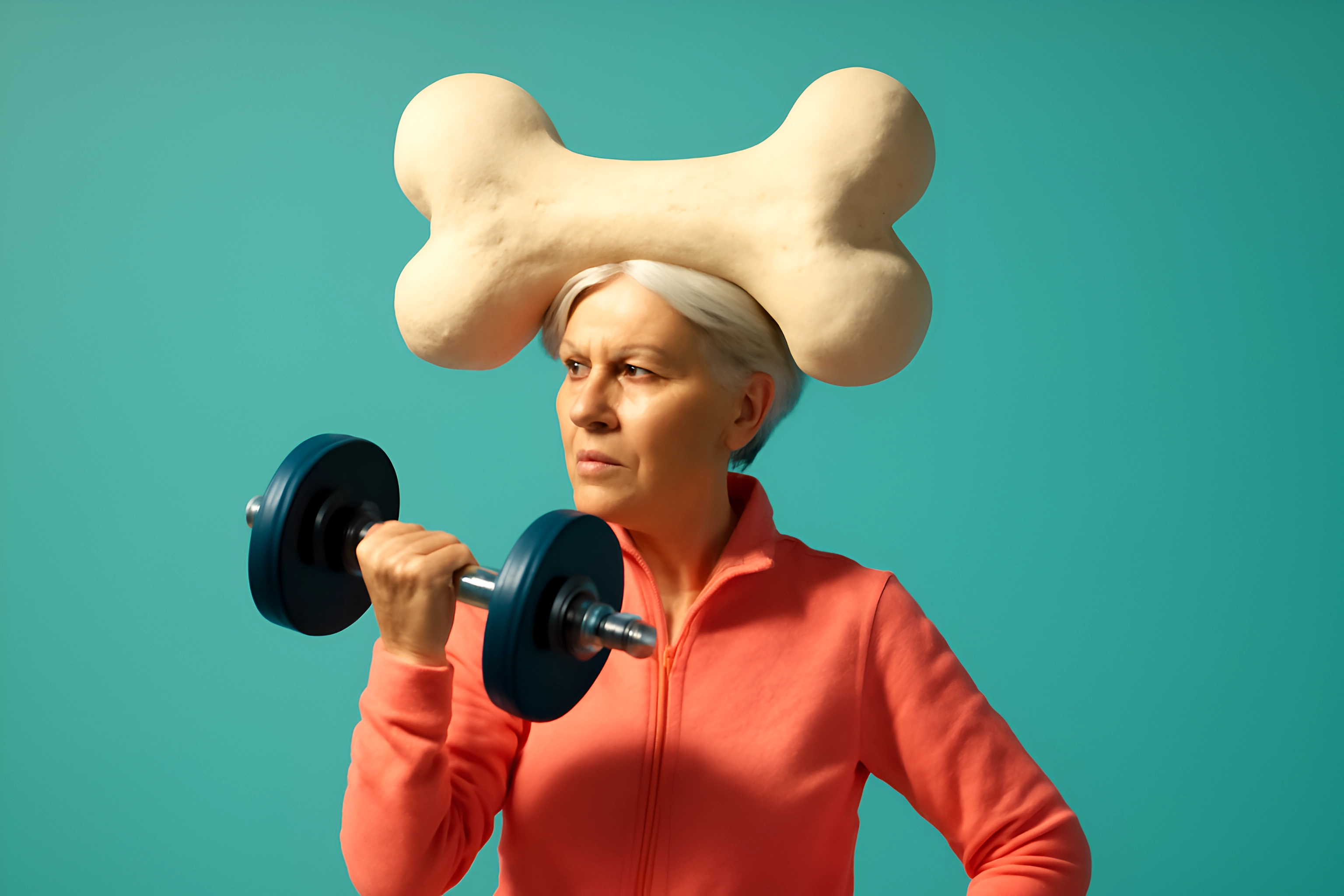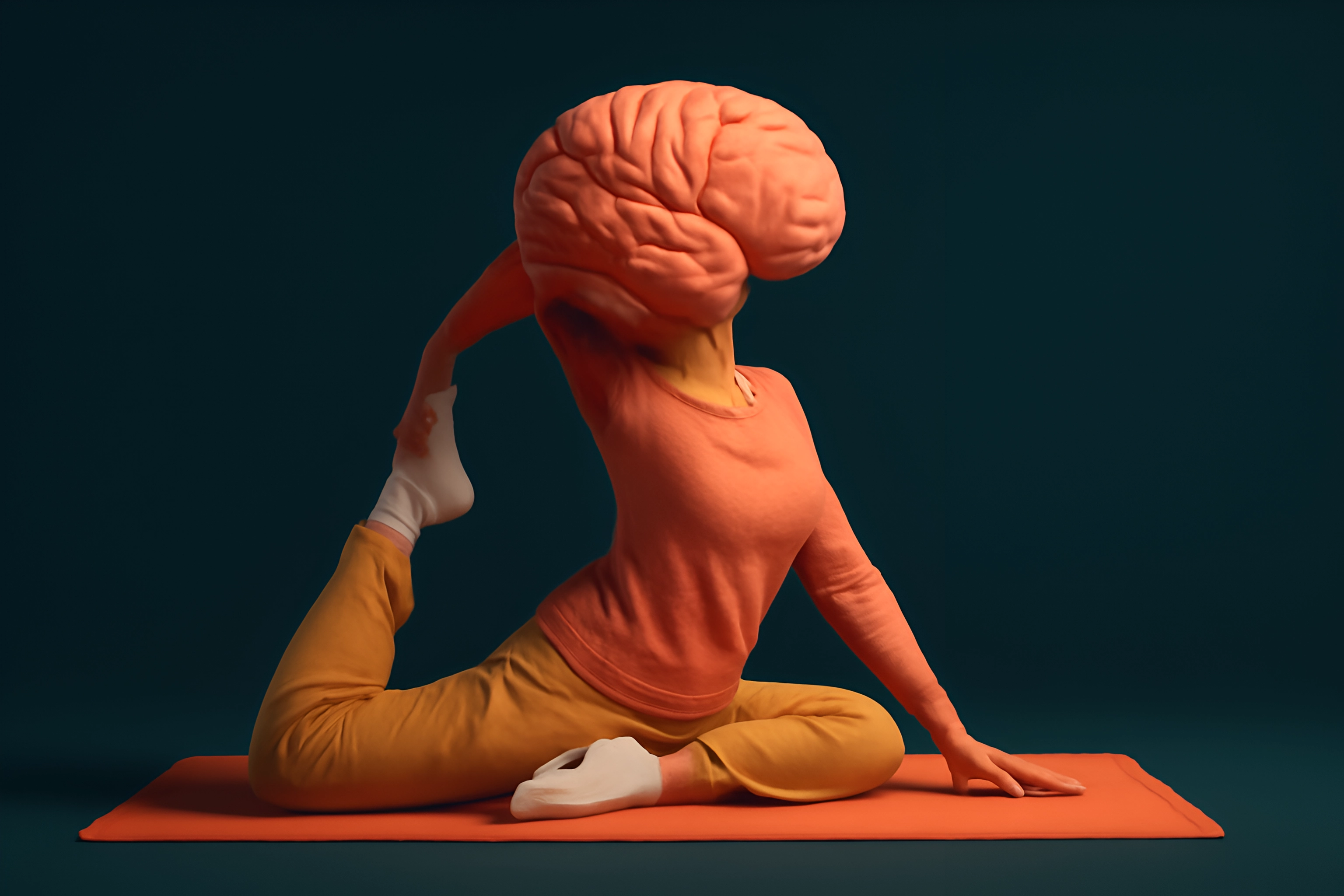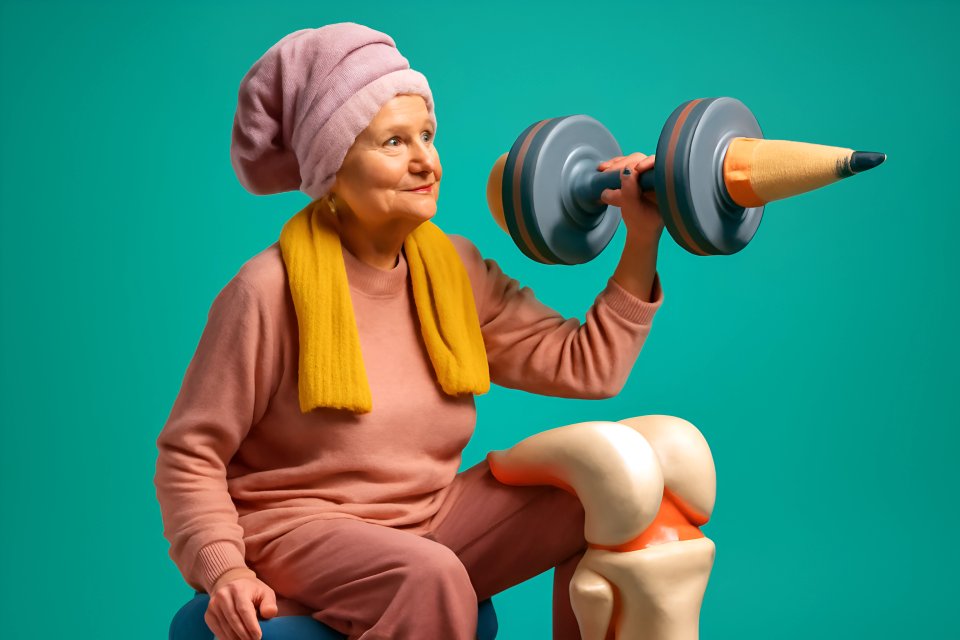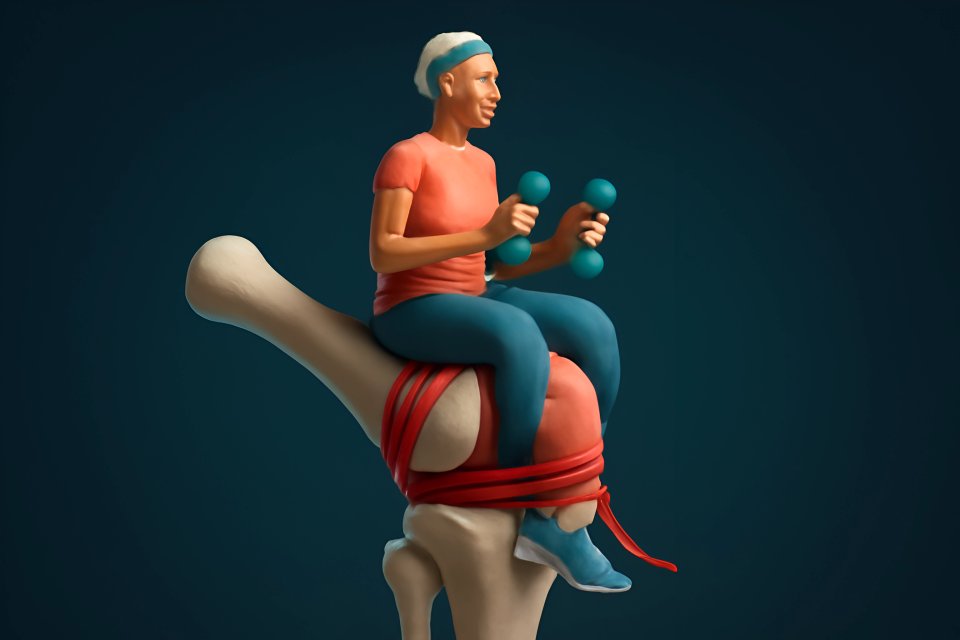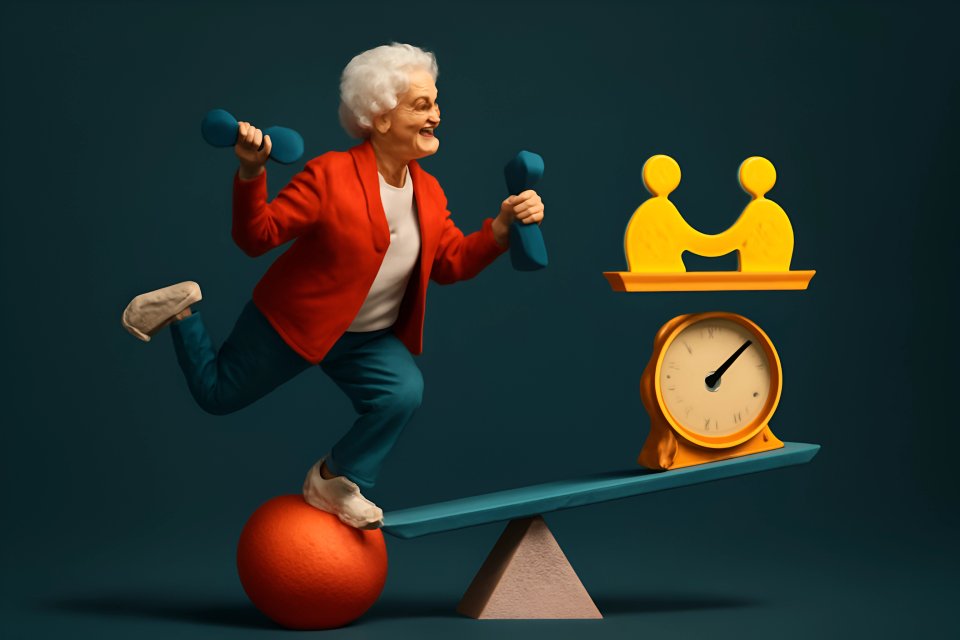
Remember when carrying all the groceries in one trip was a point of pride? Or when getting up from a low, comfortable chair didn't require a second thought, a push-off, or a quiet groan? Strength isn't just for bodybuilders and athletes; it's the very foundation of our independence, our security, and our vitality as we navigate the incredible journey of life after 50.
But let's be honest. The thought of "strength training" can bring a wave of concern. You worry about your joints, a past injury, or the simple fear of doing something wrong and setting yourself back. What if I told you there was a way to reclaim that powerful, capable feeling without putting your body at risk?
This is where low-impact strength training becomes your greatest ally. It’s the scientifically-backed secret to building lean muscle, protecting your precious bones, and boosting your energy, all without the jarring, high-impact stress that our bodies have learned to dislike. In this guide, we'll walk you through everything you need to know to create a safe low-impact strength training routine for seniors. We’ll cover the essential principles, step-by-step exercises, and tips to keep you motivated and gloriously injury-free.
The "Why": Unpacking the Incredible Benefits of Strength Training for Older Adults
Let’s get one thing straight: the goal here isn’t about looking like a magazine cover model. It’s about feeling powerful in your own skin and having the physical freedom to live the life you want. The benefits of adding resistance to your routine are profound, touching every aspect of your well-being and securing your independence for years to come.
This isn't just wishful thinking; it's proven science. Research from the National Institute on Aging shows that a structured physical activity program can help maintain mobility in vulnerable older people, and targeted strength work is a cornerstone of that success. In fact, a consistent routine can reduce the risk of falls—one of the biggest threats to senior independence—by a staggering 30-40%.
Think of each repetition as a deposit into your health bank account, building a future of resilience and vitality. The rewards are not just about muscle; they are about a fundamental upgrade to your quality of life. Here’s what you’re truly building:
- Stronger Bones: Resistance training places gentle, productive stress on your bones, signaling them to rebuild and become denser. This is your number one defense against osteoporosis, with studies showing it can increase bone mineral density by 1-3% annually.
- Better Balance & Stability: By strengthening the key muscles in your legs, glutes, and core, you create a stable base of support. This dramatically improves your balance and coordination, making you less susceptible to life-altering falls.
- Increased Metabolism: Muscle is metabolically active tissue, meaning it burns more calories at rest than fat does. According to Mayo Clinic, resistance training can elevate your metabolic rate by 7-10%, helping you manage your weight and unlock more daily energy.
- Joint Protection: When the muscles surrounding your knees, hips, and shoulders are strong, they act like natural shock absorbers. This takes the pressure off the joints themselves, reducing pain and preserving their long-term health.
- Enhanced Daily Life: This is where it all comes together. Suddenly, lifting a bag of soil in the garden, climbing a flight of stairs, or getting on the floor to play with your grandkids becomes easier, safer, and more joyful.
The Golden Rules: Safety First for Your Senior Strength Training Journey
Your desire to get stronger is fantastic, but that ambition must be paired with wisdom. The "no pain, no gain" mantra is a dangerous myth, especially for us. Our new motto is "Train Smart, Not Hard." Following these golden rules will ensure your journey is empowering, not injurious.
Consult Your Doctor
This is the absolute, non-negotiable first step on your path. Before you lift a single weight or stretch a single band, have a conversation with your healthcare provider. Discuss your intention to start a strength training program, especially if you are managing chronic conditions like heart disease, arthritis, diabetes, or high blood pressure. They can provide personalized guidance and alert you to any specific movements you should modify or avoid.
Form Over Everything
Listen closely: lifting a 2-pound dumbbell with perfect form is infinitely more beneficial—and safer—than struggling to lift a 10-pound weight with a shaky, compromised posture. The quality of the movement is what stimulates the muscle to grow. Poor form, on the other hand, only invites injury by placing stress on the wrong ligaments and joints. Start with the goal of mastering the movement itself, even with no weight at all.
Start Low, Go Slow
Eagerness can be your enemy in the beginning. Your muscles, tendons, and ligaments need time to adapt to these new demands. Begin your routine using just your body weight or the lightest resistance bands or dumbbells you can find. The key is gradual progression. Once you can comfortably complete 15 repetitions of an exercise with perfect form, you have earned the right to increase the weight or resistance by a small amount, no more than 10% at a time. For those with joint sensitivity, you can find more expert advice in our guide to practical strength training modifications for seniors with joint pain.
Listen to Your Body (and Know the Difference)
You need to become an expert in your body’s signals. There is a huge difference between the satisfying warmth and mild fatigue of a muscle that has been worked well, and a sharp, stabbing, or grinding pain in a joint. Muscle fatigue is your goal; joint pain is a red light. If you feel the latter, stop the exercise immediately. Pushing through that kind of pain is a direct path to a setback.
Don't Forget to Breathe
It sounds simple, but holding your breath during exertion is a common mistake that can cause a rapid spike in blood pressure. The rule is simple:
Exhale on the effort, inhale on the release.
For example, when pushing up from a chair squat, you breathe out. As you lower yourself back down, you breathe in. This simple technique keeps your blood pressure stable and delivers vital oxygen to your working muscles.
The Building Blocks of a Perfect Low-Impact Workout
A successful workout isn't just a random collection of exercises; it has a clear and purposeful structure. Each session should have three distinct phases: the warm-up, the main set, and the cool-down. Skipping any of these is like trying to bake a cake without preheating the oven or letting it cool before frosting—you just won't get the best results.
The 5-10 Minute Warm-Up
Think of the warm-up as a gentle wake-up call for your body. Its purpose is to increase your heart rate slightly, send warm, oxygenated blood to your muscles, and lubricate your joints. This preparation makes your muscles more pliable and resilient, significantly reducing your risk of injury during the main workout.
A good warm-up should involve light, dynamic movements that mimic the exercises you're about to perform. Forget holding static stretches—save those for the end. Instead, focus on gentle motion like marching in place, performing slow arm circles (both forward and backward), gentle torso twists, and leg swings to prepare your hips for action.
The Main Set (Your Strength-Building Core)
This is the heart of your workout, where the magic of muscle-building happens. This phase consists of the specific resistance exercises you've chosen to perform, like the ones we'll detail in the next section. During the main set, your focus should be entirely on maintaining that perfect form we discussed.
You will be working through a predetermined number of repetitions and sets for each exercise. The goal is to challenge your muscles enough to stimulate growth without pushing to the point of failure or pain. This is your time to build strength, one controlled and focused movement at a time.
The 5-Minute Cool-Down
After your last repetition, the job isn't quite done. A proper cool-down is your body's transition back to a state of rest, and it's crucial for improving flexibility and minimizing next-day muscle soreness. It allows your heart rate and breathing to return to normal gradually.
This is the time for those gentle, static stretches you skipped at the beginning. Focus on the major muscle groups you just worked. Classic cool-down stretches include a standing quad stretch (holding onto a chair for balance), a seated hamstring stretch, and a chest stretch in a doorway, holding each stretch for 20-30 seconds without bouncing. For more ideas, explore our guide on effective recovery techniques for joint health and mobility after 50.
Your Starter Kit: 6 Essential Low-Impact Exercises for Seniors
You don't need a fancy gym membership or complicated machines to build life-changing strength. The most effective tools are often the simplest: a sturdy chair, your own body weight, and perhaps a set of light dumbbells or resistance bands. The following six exercises form a powerful, full-body routine that you can do right in the comfort of your living room.
1. The Chair Squat
What it targets: This is the king of functional exercises, strengthening your legs, glutes, and core—the primary muscles you use for getting up from a chair, climbing stairs, and maintaining balance.
Step-by-step instructions: Stand in front of a sturdy, armless chair with your feet shoulder-width apart. Keeping your chest up and back straight, initiate the movement by hinging at your hips as if you're about to sit down. Lower your body in a controlled manner until you lightly tap the chair, then drive through your heels to stand back up to the starting position.
Pro-Tip/Safety Cue: Never let your knees travel forward past your toes. Focus on sending your hips backward first.
Modification: To make it easier, stack a cushion or two on the chair to reduce the range of motion. To make it more challenging, hover just above the chair for a second before standing up, or hold a light weight at your chest.
2. The Wall Push-Up
What it targets: This safe variation of a classic push-up builds strength in your chest, shoulders, and triceps, which is essential for pushing open heavy doors or lifting yourself up.
Step-by-step instructions: Stand facing a clear wall, about arm's length away. Place your palms flat on the wall, slightly wider than your shoulders and at chest height. Keeping your body in a straight line from your head to your heels, bend your elbows and slowly lean your body toward the wall until your nose is close. Push back firmly to the starting position.
Pro-Tip/Safety Cue: Keep your core engaged to prevent your back from sagging.
Modification: To make it easier, move your feet closer to the wall. To make it more challenging, move your feet further away from the wall or progress to an incline push-up on a sturdy countertop.
3. The Glute Bridge
What it targets: This exercise is fantastic for activating your glutes and hamstrings, which provides crucial support for your lower back and improves hip stability.
Step-by-step instructions: Lie on your back on a comfortable mat with your knees bent and feet flat on the floor, about hip-width apart. Place your arms by your sides with your palms down. Squeeze your glutes and lift your hips off the floor until your body forms a straight line from your shoulders to your knees. Hold for a moment at the top before slowly lowering back down.
Pro-Tip/Safety Cue: Avoid arching your lower back; the work should come from your glutes, not your spine.
Modification: To make it easier, only lift your hips a few inches off the floor. To make it more challenging, try a single-leg glute bridge by extending one leg straight while you lift your hips.
4. Seated Bicep Curls
What it targets: This classic move strengthens the biceps in your upper arms, making everyday tasks like carrying groceries or lifting a suitcase feel effortless.
Step-by-step instructions: Sit tall on the edge of a sturdy chair with your feet flat on the floor. Hold a light dumbbell or a soup can in each hand, with your arms hanging down by your sides and palms facing forward. Keeping your elbows tucked into your sides, curl the weights up toward your shoulders. Squeeze your biceps at the top, then slowly lower the weights back down with control.
Pro-Tip/Safety Cue: Do not use momentum or swing your body; the movement should be slow and deliberate.
Modification: Use lighter weights or even just make a fist and squeeze to start. To make it more challenging, use a slightly heavier weight or slow down the lowering phase of the movement.
5. Seated Rows with Resistance Band
What it targets: This is one of the best exercises for improving posture by strengthening the muscles of your upper back. A strong back helps pull your shoulders back and down, counteracting the forward slump that can develop over time.
Step-by-step instructions: Sit tall on the floor with your legs extended in front of you (knees can be slightly bent). Loop the center of a resistance band around the soles of your feet, holding one end in each hand. Keeping your back straight, pull the band toward your lower ribs, squeezing your shoulder blades together as you pull. Slowly release the tension to return to the start.
Pro-Tip/Safety Cue: Initiate the pull from your back and shoulder blades, not by yanking with your arms.
Modification: Use a lighter resistance band or sit on a chair and loop the band around a sturdy table leg. To make it more challenging, use a band with higher resistance.
6. Step-Ups using a Bottom Stair
What it targets: This simple yet powerful exercise improves leg strength (quads and glutes) and is a fantastic tool for enhancing your balance and coordination.
Step-by-step instructions: Stand facing the bottom step of a staircase or a sturdy aerobic step. Place your entire right foot firmly on the step. Press through your right heel to lift your body up, bringing your left foot to meet your right on the step. Step back down with your right foot, followed by your left, to return to the starting position. Complete all reps on one side before switching to the other.
Pro-Tip/Safety Cue: Hold onto a wall or railing for balance if needed. Keep the movement slow and controlled, avoiding any rocking or momentum.
Modification: Use a lower step or simply practice the motion on the flat ground. To make it more challenging, use a slightly higher step (no higher than your knee) or hold light weights in your hands.
Putting It All Together: Your Sample Weekly Routine
Knowing the exercises is one thing; knowing how to structure them into a consistent plan is what creates real, lasting change. The goal is not to exhaust yourself every day, but to stimulate your muscles and then give them the time they need to recover and grow stronger. Consistency is far more important than intensity.
How Often?
For optimal results, aim to perform your strength training routine 2 to 3 days per week. It is crucial that these are non-consecutive days. Your muscles don't get stronger during the workout; they get stronger during the rest period in between. Scheduling a day of rest or active recovery (like a brisk walk) between sessions is essential for this rebuilding process.
How Much?
When you're just starting out, focus on mastering the movements. Aim for 2 sets of 10-15 repetitions for each exercise. The weight or resistance you choose should be light enough that you can maintain perfect form, but heavy enough that the last few repetitions of each set feel challenging. If you can easily fly through 15 reps, it's time to slightly increase the resistance. If you can't complete 10 reps with good form, the weight is too heavy.
Sample Beginner Schedule
Here is a simple, effective way to split the exercises into a weekly schedule. This approach ensures you work your full body over the course of the week without overdoing it on any single day.
| Day | Activity |
|---|---|
| Day 1 | Workout A: Warm-up, Chair Squats (2 sets), Wall Push-Ups (2 sets), Glute Bridges (2 sets), Cool-down. |
| Day 2 | Rest or Active Recovery (e.g., walking, stretching) |
| Day 3 | Workout B: Warm-up, Step-Ups (2 sets), Seated Rows (2 sets), Seated Bicep Curls (2 sets), Cool-down. |
| Day 4 | Rest or Active Recovery |
| Day 5 | Workout A: Repeat Day 1's workout. |
| Day 6 & 7 | Rest or Active Recovery |
Fueling Your Fitness: A Note on Vital Nutrition
You can't build a strong house with flimsy materials, and the same is true for your body. Your new strength training routine is only one half of the equation; the other half is providing your body with the high-quality fuel it needs to repair muscle tissue and build stronger bones. Exercise and nutrition are a team, and they work best together.
The most important nutrient for muscle repair is protein. After you work out, your body is primed to use protein to rebuild the muscle fibers you've challenged. Aiming for a protein intake of 1.2-1.5 grams per kilogram of body weight per day, as suggested by dietary experts, can make a significant difference.
Of course, we can't forget about bone health. Calcium and Vitamin D are the dynamic duo for maintaining bone density. Ensure you're getting adequate amounts through dairy products, leafy greens, fortified foods, and safe sun exposure. To get started on the right foot each day, explore our guide to balanced breakfasts for seniors with nutritious recipes to fuel your body for success.
Conclusion: Embrace Your Journey to a Stronger You
Let's put this all in perspective. You now have the blueprint for taking back control of your physical strength, your stability, and your confidence. The key takeaways are simple but powerful: start slowly, always prioritize safety and perfect form over heavy weights, and be wonderfully, stubbornly consistent.
Strength training after 50 isn't about trying to turn back the clock; it's about winding it up for the vibrant, active, and independent years ahead. Every chair squat you complete, every wall push-up you master, is a direct investment in your health, your freedom, and your ability to say "yes" to life. You are capable, you are resilient, and you've absolutely got this.
Now it's your turn to join the conversation. What are your favorite safe workouts for older adults? Do you have any senior strength training tips that have worked for you? Share your wisdom and experiences with the FitOverFifty community in the comments below









